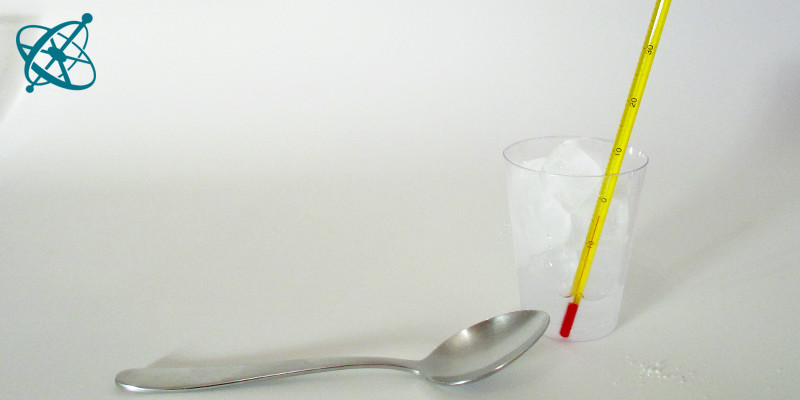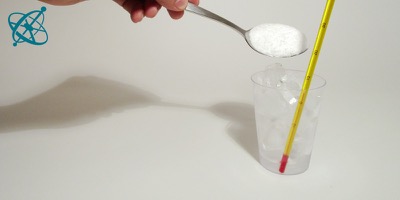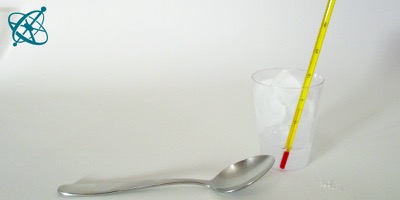 www.sciensation.org | Ciênsação hands-on experiments are published as Open Educational resources under a Creative Commons Attribution-ShareAlike 4.0 International License.
www.sciensation.org | Ciênsação hands-on experiments are published as Open Educational resources under a Creative Commons Attribution-ShareAlike 4.0 International License.
Adding salt to ice…

…makes its temperature drop below zero.
Colder than ice
In regions where the temperature drops below zero, salt is often used to 'melt' ice and snow on the streets (see also 'Salt and Ice'). Many people do not know that while the ice indeed melts, it is not getting warmer but instead cools down: Using salt to make ice melt is an every-day example of an endothermic process (but not a chemical reaction).
To contrast this experiment with an exothermic reaction, take a look at 'Warm steel wool'.
Endothermic processes draw energy from their environment, thus usually cooling it down.
Melting ice is an endothermic process.
Ice cubes
Table salt
Thermometers
Arrange for each group a plastic cup with a bit of water, at least 3 or 4 ice cubes and a thermometer in it. In a second cup they should have one tablespoon of salt at room temperature
Have a watch at hand to give every minute a signal to your students to note down the current temperature in the cup.
Note down the temperature of the ice. On your teacher's command, pour salt over the ice cubes and write down the temperature every minute.
1. What happens to the ice and what to the salt?
2. How can warm salt make ice colder?
Does 0˚C mean that an object has no thermal energy?
› No, that would (theoretically) be the case at -273.15˚C.
What changes in the water when the ice melts?
› It changes from a crystalline structure to the liquid phase.
Which bonds are stronger, i.e. bind more energy: those holding together the water crystal or those keeping together the water molecules as liquid?
› Those holding together the crystal.
Where does the energy come from that is needed to melt the ice?
› From the thermal energy of the ice and the environment.
Breaking the crystal structure of salt and ice requires energy. The melting process takes this energy from the thermal energy in the system and thus cools it down. Your students will see from the temperature measurements they noted down (suggestion: let them draw a graph from it) that after a few minutes the system reached a dynamic equilibrium at a lower temperature.
For details on how salt "makes ice melt", please see the experiment 'Salt and Ice'.

